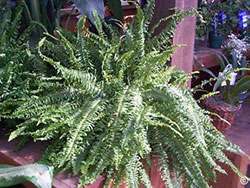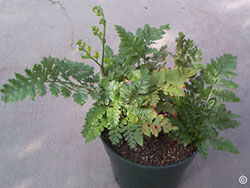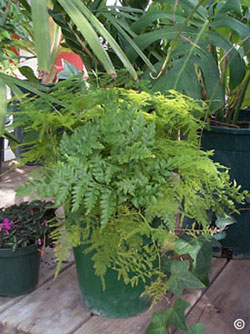
What is important to consider when growing a fern?
Ferns are an attractive addition to any home or office, however, these plants are delicate and sensitive to rough handling. Place ferns out of high-traffic areas where people might brush against them. Ferns prefer bright, indirect sunlight, and temperatures between 68 and 78 degrees Fahrenheit.
Do ferns need light or shade?
Ferns are an attractive addition to any home or office with their foliage ranging from delicate to dramatic. Most ferns thrive in filtered light or shady sites outdoors, but the tropical ferns we use as houseplants are poor candidates for low-light locations.
How much should I water my fern?
Consistent watering is important for healthy ferns. They should be kept evenly moist, not wet. Overwatering causes the fronds to yellow and wilt and can lead to root rot and fungal diseases, especially if the pot is allowed to sit in water. Too little water also causes wilt. A few varieties, such as Rabbit’s Foot Fern, Brake fern, and Holly Fern are an exception to the consistent watering rule. For these, you may allow the soil to dry out slightly between waterings.

Ferns should be watered thoroughly, until excess water flows through the container’s drain holes. Then empty out the excess water in the tray or saucer. Wait to water again until the soil surface begins to feel dry to the touch. Place ferns far enough from walls and other plants to insure good air circulation. If you hang your ferns from the ceiling, be sure they are not too close to the ceiling. The higher they are, the hotter and drier the air, especially during the heating season. This may cause the tips of your fern’s fronds to turn brown and die.
Do I need to do anything else to my fern other than water it?
Ferns appreciate humidity. While you can mist your ferns, it’s not very effective and increases the likelihood of foliar leaf spot diseases. A humidifier is a more reliable source of humidity that is not directly on the fronds. You also can increase humidity around the ferns by placing the pots on a pebble-lined tray. Add water to the pebbles, making sure the bottoms of the pots do not touch the water in the tray. The evaporation will add extra humidity around the plants. Because it’s difficult to improve humidity significantly indoors, it’s usually better to concentrate on proper watering to eliminate moisture stress
Should I fertilize my fern?

Ferns grow best when they receive a complete fertilizer developed for houseplants. Most ferns should be fertilized once each month from April through September when the plants are actively putting on new growth, or if the foliage appears a paler green than normal. Apply liquid houseplant fertilizer at about one-half the recommended rate. Too much fertilizer will scorch the foliage. Newly potted plants should not be fertilized for four to six months, again unless there are indications of active growth.
Should i repot my fern?
Ferns will require repotting every few years. Repot in the spring, using a purchased soil-less mix that is 50 percent peat moss. Ferns prefer a potting soil that’s porous and allows excess water to drain but that also retains moisture between waterings.
Divide overcrowded plants by removing from the pot and cutting carefully between rhizomes (fleshy roots). Keep as many leaves as possible per division.
How do you know when your ferns need dividing? If you’ve noticed that the center of the clump is hollow or dead and/or the leaves are smaller than usual, it’s probably time to divide. You may also divide if you simply want more plants. Generally, this is done every three to five years. Remember, do not fertilize transplants for four to six weeks after dividing.



